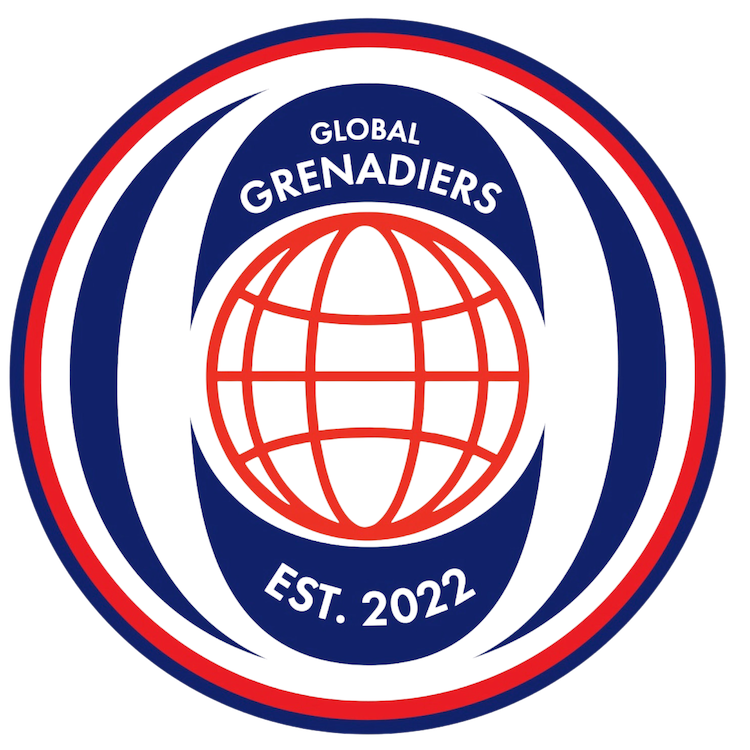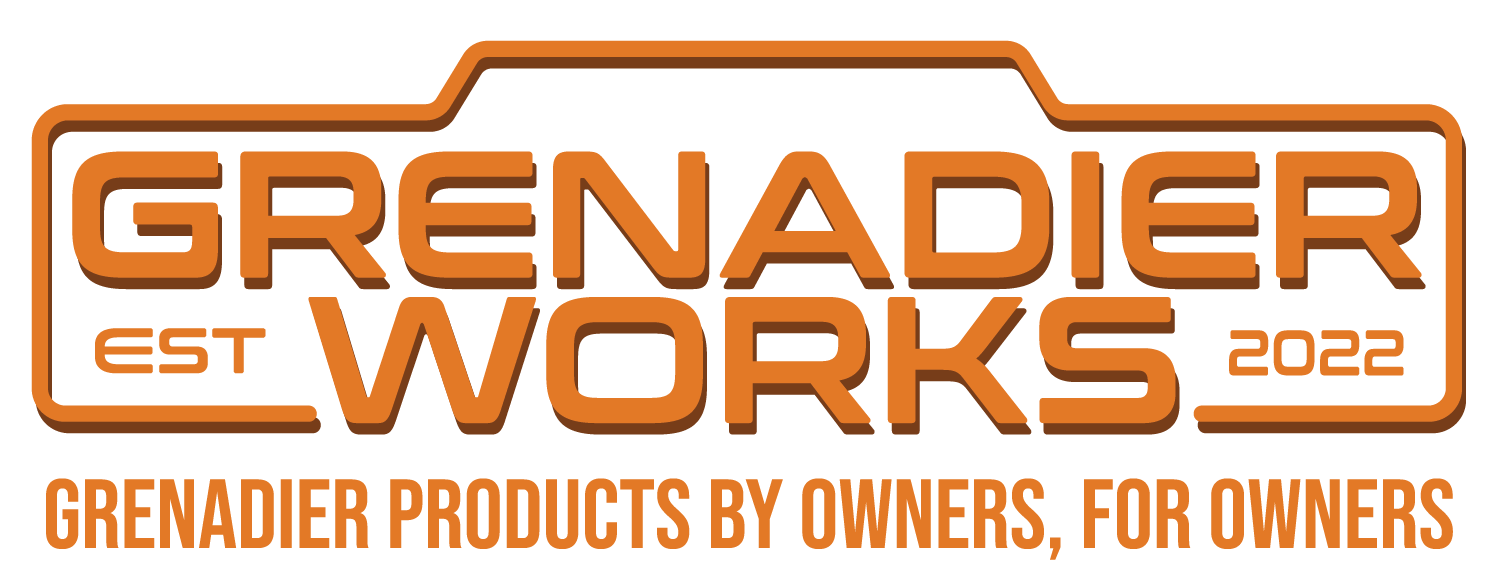Drop a heavy towball load and it should look just rightEven 35s look small on these. 40s next?Seriously let us know about gearing performance on and off road.
The Grenadier Forum
Register a free account today to become a member! Once signed in, you'll be able to contribute to the community by adding your own topics, posts, and connect with other members through your own private inbox! INEOS Agents, Dealers or Commercial vendors please use the contact us link at the bottom of the page.
-
Guest submit your best shot for a chance to win the December Photo Contest. Photo Contest Click Here
You are using an out of date browser. It may not display this or other websites correctly.
You should upgrade or use an alternative browser.
You should upgrade or use an alternative browser.
Eibach Springs 30mm+ and BF KO1 285/75R17 (VIDEO)
I installed Rear springs last night in my garage with floor jacks. Took 1 hour per side. I disconnected shocks and sway bars only. I did have to use spring compressors. Warning do not use spring compressors if you do not know what you are doing. There is a lot of potential energy that can cause major injury. I will work on the fronts tonight.
Same with spare and if so, any issue? Stock shocks?Yes 35x11.50 17 Toyo ATIII
Stock shocks, same 35x11.50 Toyo spare.Same with spare and if so, any issue? Stock shocks?
I almost think the 35s will impact the front of the front wheel arch if compressed.
Looks good though.
Looks good though.
Looks amazing. Let us know if you encounter any rubbing or impingement issues with articulation.
Looks like the buzzspecialvehicles sliders are on there; OK4WD is their US distributor. I'm hoping my sliders get here soon.
Use a proper spring/strut compressor kit. they aren't expensive. Whats 200 bucks v facial reconstruction surgery?. If you're talking about those allthread sticks, there is no magic knowledge, just avoiding bad luck.I installed Rear springs last night in my garage with floor jacks. Took 1 hour per side. I disconnected shocks and sway bars only. I did have to use spring compressors. Warning do not use spring compressors if you do not know what you are doing. There is a lot of potential energy that can cause major injury. I will work on the fronts tonight.
load range C.Yes 35x11.50 17 Toyo ATIII
Still a 118 load index, so 2910lbs per tireload range C.
I didn't bring up the weight rating as I'm not that concerned with it. I'm concerned about the ply count. It's not typical for SUVs to max out the load like a pickup or a van, but, the 6 v 10 ply is where it bites you off road.Still a 118 load index, so 2910lbs per tire
- Local time
- 5:26 AM
- Joined
- Nov 14, 2021
- Messages
- 1,176
I didn't bring up the weight rating as I'm not that concerned with it. I'm concerned about the ply count. It's not typical for SUVs to max out the load like a pickup or a van, but, the 6 v 10 ply is where it bites you off road.
You raise a good point.
The Load Index of 118 for the Toyo AT3 (in 35 x 11.5 R17) is in line with factory specs: Load Index of 117-121 if you get the BFG KO2s, with the variance coming from the wheel size (17 or 18).
But the Load Range of C for the Toyo AT3 (in 35 x 11.5 R17) is not up to factory spec when compared to the BFG KO2s (Load Range E). This may, or may not, matter - depending on the terrain you drive off-road, how much you tow, and whether or not you mind a little squish in your sidewall when taking a corner.
A point of clarification: Load Range (C, D, E, or F are typical Load Ranges for SUVs and pickup trucks) has replaced number of plies. Back in the day, what are now C-rated tires were 6-ply, while D-rated tires were 8-ply, and E-rated tires were 10-ply. Today we might refer to a C-rated tire as 6-ply rated, but it doesn't mean there are 6 plies in the tire. Today, AT tires either have 2 or 3 ply sidewalls, and sidewall strength is a key variable in the Load Range of a tire.
The BFG KO2 has a 3-ply sidewall, and is well-known for being one of the strongest AT tires on the market (despite it being ~10 years old in design). By strong - I'm talking about the carcass of the tire - especially the sidewall.
Both the Toyo AT3 and the Falken Wildpeak AT3W have 2-ply sidewalls.
If you off-road in sharp rocks, a 3-ply sidewall can make a difference. It will also be more resistant to thorns.
Practially speaking, the strongest sidewalls in an AT tire will be a 3-ply sidewall, in Load Range E (let's ignore Load Range F). The weakest sidewalls in an AT tire will be a 2-ply sidewall, in Load Range C.
Again - one should choose a tire based on what you are going to do with the vehicle, and on what features of a tire you prioritize.
No need to keep reading, unless you are a tire geek...
I'm not suggesting the BFG KO2 is the right tire for everyone - it depends on how you use your rig, and where you live. The KO2 is an excellent dry-traction tire, but it is not a great tire on wet roads or in the winter (its okay, but not great). The Falken AT3W has grabbed a big chunk of market share since it came out about 4 years ago because it was so much better than the KO2 on wet roads and in the snow. However, in response to complaints about the 2-ply sidewall (mostly from folks who drive in the rocks), Falken produced the AT4W. While rumor has it that some AT4W tires will still be made with 2-ply sidewalls, one of the big changes is that many AT4W tires will be made with a 3-ply sidewall, and with some other changes that increase the overall strength of the tire - so it can go head to head with BFG in the "super-tough AT tire" segment. The changes Falken made to the AT4W - especially if purchased with 3-ply sidewalls - have made the tire much heavier than the AT3W. It is also going to be slightly "less excellent" on wet roads (changes in block patterns and siping), but it will still probably be one of the top wet-road AT tires on the market.
Making the AT4W with both 2 and 3 ply sidewalls seems like a bad idea, as many consumers won't realize that the tire comes with two different sidewall options. IMHO, they should have kept making the AT3W in 2-ply (with some updates to other aspects of the tire - if they wanted), and brought out the AT4W in 3-ply only. This would have created more clarity. BFG had a real problem when they produced the KO2 with two different rubber compounds.
To complicate the market further, the BFG KO3 has changes that make it better than the KO2 on wet roads and snow - to better compete against the wet road performance of the Falken AT tires. So we are seeing some convergence in the brands: the KO3 gaining wet-traction performance, while the AT4W is gaining strength in the carcass (especially in the sidewalls).
I've been running the BFG KO2 in Load Range E, because (1) I frequently drive in sharp rocks, or on dry dirt roads, (2) I often go without another vehicle for support, so I'd rather err on the side of caution, and have a super-beefy sidewall, (3) I live in a pretty dry place, so I don't see a lot of mud off-road, and I don't drive on wet roads that often, and (4) I run a dedicated snow tire in the winter, so the shortcomings of the KO2 on snow and ice are irrelevant to me. If I lived in a really wet place - like the Pacific Northwest - I would not choose the KO2 as my summer tire. My next set of summer tires will either be the KO3 or the Mickey Thompson Baja Boss AT (also 3-ply sidewall, but a little more aggressive tread than the KO tires).
If you are into tires, this guy is awesome:
BFG M/T or A/T, that is all
There really are many great brands. I’ve owned the BFG AT once. Never again.BFG M/T or A/T, that is all
I also plan to change the springs myself (as soon as my Grenadier arrives...)I installed Rear springs last night in my garage with floor jacks. Took 1 hour per side. I disconnected shocks and sway bars only. I did have to use spring compressors. Warning do not use spring compressors if you do not know what you are doing. There is a lot of potential energy that can cause major injury. I will work on the fronts tonight.
What spring compressor do you use? Do you have any models to recommend?
In your opinion, would this model from Amazon be suitable?
Thanks in advance
Attachments
Metalcloak is looking at this type of solutionThe bigger question is when a proper lift will be available. All taller springs do is move the vehicle higher into its suspension travel, reducing droop and increasing available compression travel from the static position. Springs alone don't actually provide any more tire clearance because the axle can still compress to the OEM location against the bump stops. A true lift will include longer shocks and extended bump stops at a minimum. This will result in greater overall suspension travel and a true increase in tire clearance. And for the Grenadier specifically it appears longer brake lines will also be necessary as the OEM lines do not have any extra length and will be put under stress by the extra droop of longer shocks.
This is a super clear explanation of what a spring change cannot do. Thank you!All taller springs do is move the vehicle higher into its suspension travel, reducing droop and increasing available compression travel from the static position. Springs alone don't actually provide any more tire clearance because the axle can still compress to the OEM location against the bump stops.
Great write up!You raise a good point.
The Load Index of 118 for the Toyo AT3 (in 35 x 11.5 R17) is in line with factory specs: Load Index of 117-121 if you get the BFG KO2s, with the variance coming from the wheel size (17 or 18).
But the Load Range of C for the Toyo AT3 (in 35 x 11.5 R17) is not up to factory spec when compared to the BFG KO2s (Load Range E). This may, or may not, matter - depending on the terrain you drive off-road, how much you tow, and whether or not you mind a little squish in your sidewall when taking a corner.
A point of clarification: Load Range (C, D, E, or F are typical Load Ranges for SUVs and pickup trucks) has replaced number of plies. Back in the day, what are now C-rated tires were 6-ply, while D-rated tires were 8-ply, and E-rated tires were 10-ply. Today we might refer to a C-rated tire as 6-ply rated, but it doesn't mean there are 6 plies in the tire. Today, AT tires either have 2 or 3 ply sidewalls, and sidewall strength is a key variable in the Load Range of a tire.
The BFG KO2 has a 3-ply sidewall, and is well-known for being one of the strongest AT tires on the market (despite it being ~10 years old in design). By strong - I'm talking about the carcass of the tire - especially the sidewall.
Both the Toyo AT3 and the Falken Wildpeak AT3W have 2-ply sidewalls.
If you off-road in sharp rocks, a 3-ply sidewall can make a difference. It will also be more resistant to thorns.
Practially speaking, the strongest sidewalls in an AT tire will be a 3-ply sidewall, in Load Range E (let's ignore Load Range F). The weakest sidewalls in an AT tire will be a 2-ply sidewall, in Load Range C.
Again - one should choose a tire based on what you are going to do with the vehicle, and on what features of a tire you prioritize.
No need to keep reading, unless you are a tire geek...
I'm not suggesting the BFG KO2 is the right tire for everyone - it depends on how you use your rig, and where you live. The KO2 is an excellent dry-traction tire, but it is not a great tire on wet roads or in the winter (its okay, but not great). The Falken AT3W has grabbed a big chunk of market share since it came out about 4 years ago because it was so much better than the KO2 on wet roads and in the snow. However, in response to complaints about the 2-ply sidewall (mostly from folks who drive in the rocks), Falken produced the AT4W. While rumor has it that some AT4W tires will still be made with 2-ply sidewalls, one of the big changes is that many AT4W tires will be made with a 3-ply sidewall, and with some other changes that increase the overall strength of the tire - so it can go head to head with BFG in the "super-tough AT tire" segment. The changes Falken made to the AT4W - especially if purchased with 3-ply sidewalls - have made the tire much heavier than the AT3W. It is also going to be slightly "less excellent" on wet roads (changes in block patterns and siping), but it will still probably be one of the top wet-road AT tires on the market.
Making the AT4W with both 2 and 3 ply sidewalls seems like a bad idea, as many consumers won't realize that the tire comes with two different sidewall options. IMHO, they should have kept making the AT3W in 2-ply (with some updates to other aspects of the tire - if they wanted), and brought out the AT4W in 3-ply only. This would have created more clarity. BFG had a real problem when they produced the KO2 with two different rubber compounds.
To complicate the market further, the BFG KO3 has changes that make it better than the KO2 on wet roads and snow - to better compete against the wet road performance of the Falken AT tires. So we are seeing some convergence in the brands: the KO3 gaining wet-traction performance, while the AT4W is gaining strength in the carcass (especially in the sidewalls).
I've been running the BFG KO2 in Load Range E, because (1) I frequently drive in sharp rocks, or on dry dirt roads, (2) I often go without another vehicle for support, so I'd rather err on the side of caution, and have a super-beefy sidewall, (3) I live in a pretty dry place, so I don't see a lot of mud off-road, and I don't drive on wet roads that often, and (4) I run a dedicated snow tire in the winter, so the shortcomings of the KO2 on snow and ice are irrelevant to me. If I lived in a really wet place - like the Pacific Northwest - I would not choose the KO2 as my summer tire. My next set of summer tires will either be the KO3 or the Mickey Thompson Baja Boss AT (also 3-ply sidewall, but a little more aggressive tread than the KO tires).
If you are into tires, this guy is awesome:
View: https://www.youtube.com/watch?v=IPXfAkAlv6g
One thing I would add is as you go stiffer sidewalls it does impact ride quality.
Yes, always trade offs.
- Local time
- 5:26 AM
- Joined
- Nov 14, 2021
- Messages
- 1,176
Yes, the stronger / stiffer sidewall will translate more bumps into the cabin for sure. This is where a good suspension comes in. My Tacoma is smoother and more comfortable with E-rated tires than my buddy's Tacoma on C-rated tires because he is on stock suspension, and I have a really nice aftermarket suspension.Great write up!
One thing I would add is as you go stiffer sidewalls it does impact ride quality.
Yes, always trade offs.
Similar threads
- Replies
- 14
- Views
- 620
- Replies
- 64
- Views
- 10K
- Replies
- 15
- Views
- 2K
- Replies
- 10
- Views
- 501

![71+IQwpVSuL._AC_SL1500_[1].jpg](https://ineosforum-data.community.forum/attachments/7822/7822161-14c8192d89fe42036d25e0b28d5e821d.jpg?hash=FMgZLYn-Qg)


